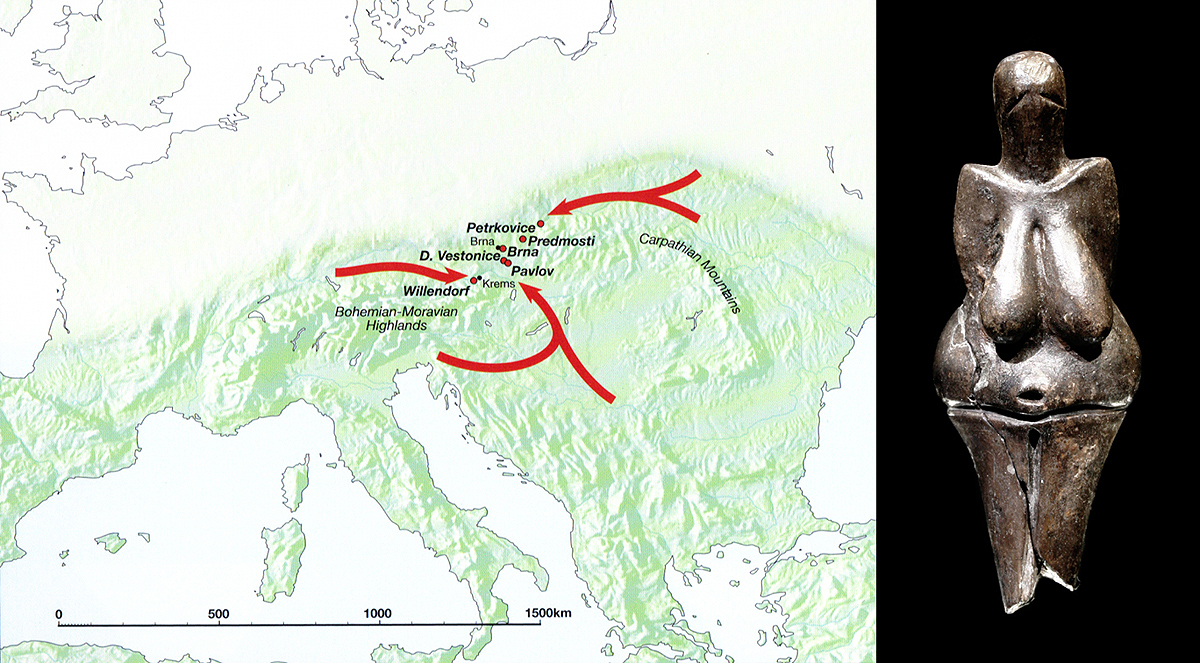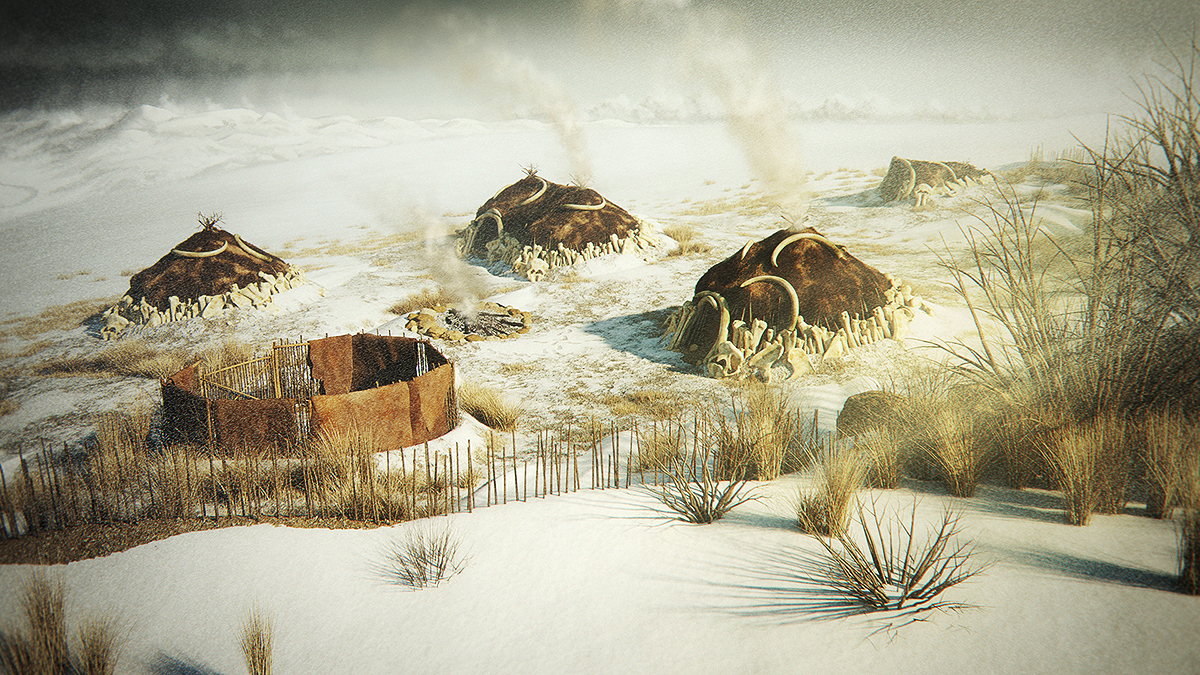


What and where is Dolní Věstonice?
Jill Cook, Keeper of Britain, Europe and Prehistory at the British Museum and Curator of the 2013 exhibition 'Ice Age art: arrival of the modern mind', sheds light on this in light of the archaeology as well as the Central and Eastern European Palaeolithic sculptures. She describes the significance of Dolní Věstonice in her publication 'Ice Age art: arrival of the modern mind'.

Here, Jill Cook describes the significance of Dolní Věstonice in an extract from her publication 'Ice Age art: arrival of the modern mind':
'After about 30,000 years ago, the undulating countryside within the natural corridor known as the Moravian Gate, connecting the North European Plain to the Danube Valley, became a significant area of human activity on a highway for migrating animals, notably mammoth herds.
The excavation of huge open-air campsites began in the late nineteenth century around Brno, Moravia, in the Czech Republic, revealing settlements constructed by communities of people who depended on mammoths for food and raw materials. Such settlements contain structures used as dwellings, as well as hearths, pits, thick spreads of ash from burnt bones and the remains of numerous mammoths sometimes stacked in piles sorted by anatomical parts.

Within these campsites stone and bone tools, decorated objects, ivory sculptures and the ceramic models are numerous. Several reports in the Illustrated London News between 1929 and 1937 headlined discoveries 'as wonderful as that of Tutankhamen', then heralded 'an amazing Palaeolithic Pompeii', 'the birth of sculpture' and the 'oldest human portrait'.
Although older sculptures have since been discovered, the rest of these populist headlines could still be applied to convey the richness and significance of the Moravian sites that produced many of the significant works described in this book. Of world renown is the baked clay female figure, the oldest known ceramic, from Dolní Věstonice, an enormous site at the southern end of the Moravian Gate'.
Commentby Bradshaw Foundation
Monday 04 December 2023
by Bradshaw Foundation
Friday 30 June 2023
by Bradshaw Foundation
Thursday 06 April 2023
by Bradshaw Foundation
Thursday 24 November 2022
by Bradshaw Foundation
Tuesday 27 September 2022
by Bradshaw Foundation
Thursday 08 September 2022
by Bradshaw Foundation
Tuesday 19 July 2022
by Bradshaw Foundation
Monday 06 June 2022
by Bradshaw Foundation
Friday 11 March 2022
by Bradshaw Foundation
Wednesday 02 March 2022
by Bradshaw Foundation
Thursday 26 August 2021
by Bradshaw Foundation
Monday 16 August 2021
by Bradshaw Foundation
Tuesday 06 July 2021
by Bradshaw Foundation
Thursday 06 May 2021
by Bradshaw Foundation
Thursday 06 May 2021
by Bradshaw Foundation
Tuesday 16 March 2021
by Bradshaw Foundation
Monday 04 December 2023
by Bradshaw Foundation
Friday 30 June 2023
by Bradshaw Foundation
Thursday 06 April 2023
by Bradshaw Foundation
Thursday 24 November 2022
by Bradshaw Foundation
Tuesday 27 September 2022
by Bradshaw Foundation
Thursday 08 September 2022
by Bradshaw Foundation
Tuesday 19 July 2022
by Bradshaw Foundation
Monday 06 June 2022
by Bradshaw Foundation
Friday 11 March 2022
by Bradshaw Foundation
Wednesday 02 March 2022
by Bradshaw Foundation
Thursday 26 August 2021
by Bradshaw Foundation
Monday 16 August 2021
by Bradshaw Foundation
Tuesday 06 July 2021
by Bradshaw Foundation
Thursday 06 May 2021
by Bradshaw Foundation
Thursday 06 May 2021
by Bradshaw Foundation
Tuesday 16 March 2021
Friend of the Foundation











